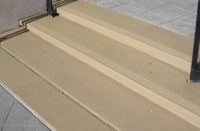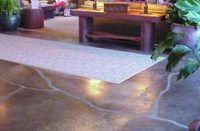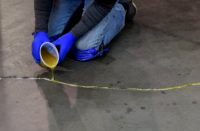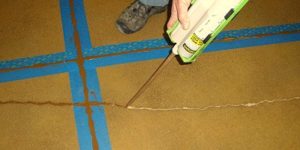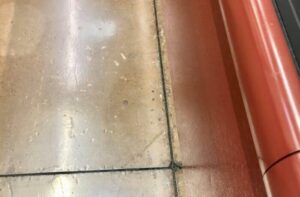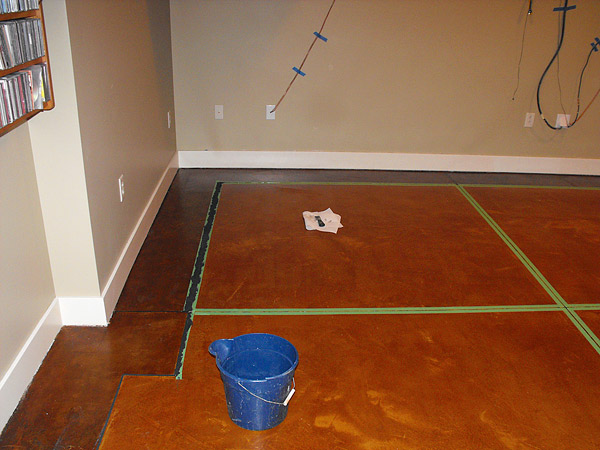
Recently I attended a training event for floor repairs. About 30 guys gathered together who had a wealth of knowledge on concrete and could share stories for days about moisture problems, tight deadlines, and the pains of being a subcontractor. However, I noticed that many had very little experience in determining the best way to fill a joint and the difference between various joint fillers.
For the purpose of this article we are going to talk about contraction joints, more commonly called control joints, and the products used to fill them. Control joints are cuts placed into the concrete at the time of pouring, or shortly after, to control random cracking in concrete. This works by creating a weakened area in the slab — concrete cracks follow the path of least resistance. The goal is to have your concrete crack inside a nice clean cut rather than randomly throughout the pour.
≈For some concrete projects, joint fillers are only an aesthetic concern, while in other situations they are integral to the concrete’s long-term performance and lifetime cost. So let’s take a closer look at the types of common joint fillers and types of projects where they work best.
Urethane or flexible joint fillers
Flexible joint fillers may be the most recognizable type to many contractors. Flexible joint fillers have been around for many years. As the name implies, they stay flexible when cured to allow the slab to move while the joint filler stays in place. These are a great fit for all outdoor concrete surfaces and light-traffic interior floors. These joint fillers keep dirt, debris, and water from gathering in open control joints. Their flexibility also makes them great for expansion joints, construction joints and all outdoor concrete projects. The inherent weakness in these types of fillers is their inability to transfer load or down pressure. These fillers will not hold up under heavy wheeled traffic, such as forklift tires.
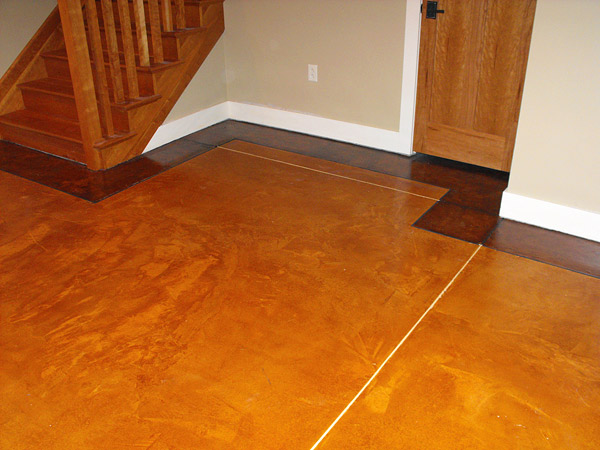
Installation
Flexible joint fillers are one of the easiest fillers to place. These products typically come in a standard caulking container and can be installed quickly and affordably.
Semirigid joint fillers
Semirigid joint fillers are the most recent advancement in control joint filling. They continue to gain attention as polished concrete and finished concrete floors have become popular in retail, commercial and industrial settings. In heavy-traffic environments, especially under forklift loads, control joints take a lot of abuse. Joints can be a burden in these environments if not properly filled, as they create points of contact for the floor traffic. At these points of contact the concrete can break or chip along the joint, resulting in joint spalling.
Semirigid joint fillers serve a structural purpose in the open concrete joint — they carry the load of traffic across the open joint. This provides protection along the joint edge and adds years of useful life to a concrete floor. Semirigid joint fillers, when bonded on both sides of the joint, will also keep dirt, debris and water from gathering into open joints.
Joint filler hardness is measured using a Shore A gauge per ASTM D2240. “The harder the filler is, the less it will accommodate dynamic movement,” says Scott Metzger, owner of Metzger/McGuire, which makes joint fillers. “Ideally in selecting a joint filler we aim for a hardness that provides sufficient edge protection but allows for some degree of expansion/contraction at the joint.”
Installation
These semirigid products are dual-component products that require mixing before placing. Due to the fast set times, dual cartridge containers or dual-component pumps are used to place these types of fillers. This type of joint filling usually involves investment in equipment and training.
Joint fillers for seamless floors
In seamless resinous flooring applications, joint filling is integral for the successful system installation. The purpose of a seamless floor is to have no exposed control joints. Each manufacturer may have a different type of joint filler to be used with their specific flooring installation, but these joint fillers are usually made of special blends of epoxies or urethanes. The joint fillers have similar properties to the resinous flooring system being installed, so they bond with the applied flooring. When filling joints for a seamless floor, always make sure to use the vendor’s approved joint filling procedure and products.
Installation
Joint fillers for seamless floors are typically troweled or poured into the open joint and then ground down or scraped smooth with the surrounding surface.
Most joints fillers come in various tints. Some people find that joint fillers provide a cleaner, more finished appearance, while others choose to fill joints for performance reasons. As a contractor, it is your duty to understand what products work best in each situation and make the best decision for your client. Your reputation is counting on it.
